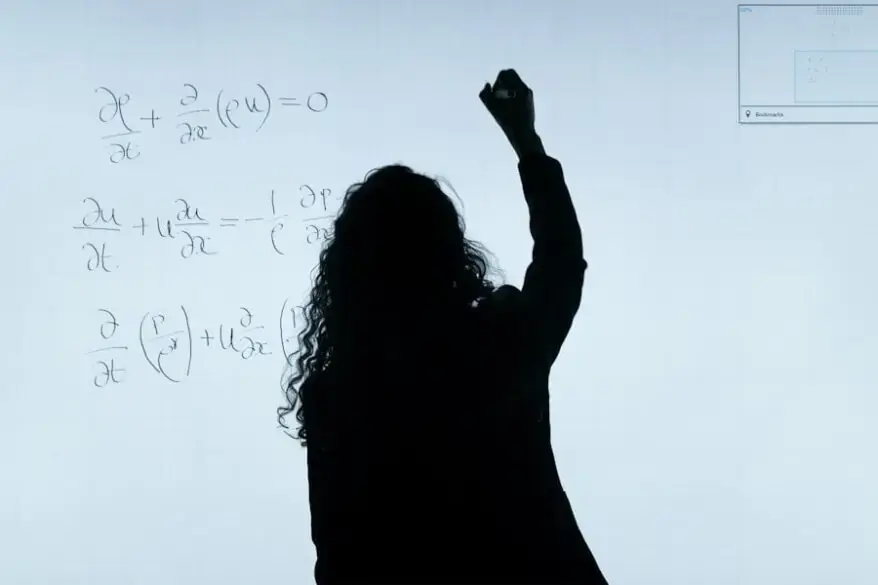The Surprising Ancient Civilization That Invented Our Number System Will Blow Your Mind!
Estimated reading time: 9 minutes
Hey! we will introduce you a surprising ancient civilization that invented our number system. Yes, it’s ancient Indian mathematicians who introduced number system to world. Mathematics is a field of study that has gained increasing recognition and importance in recent decades. Number system used in mathematics, dates back thousands of years, has made significant contributions to the development of numerical systems, algebra, geometry, and trigonometry. The ancient Indians were pioneers in their use of the decimal system and the concept of zero as a placeholder. Their mathematical achievements have had a profound impact on modern mathematics and science. Studying ancient Indian mathematics not only allows us to appreciate the brilliance of these ancient mathematicians but also provides valuable insights into the origins and evolution of mathematical concepts.
Key Takeaways
- The Indian number system has its origins in ancient times and is based on the concept of place value.
- The Katapayadi system is a unique method of numerical representation that uses consonants to represent numbers.
- Ancient Indian mathematics was characterized by its brilliance and sophistication, with contributions to fields such as algebra, geometry, and trigonometry.
- Indian mathematics had a significant influence on the world, with its concepts and methods being adopted by other cultures and civilizations.
- Aryabhatta is considered the father of Indian mathematics and made significant contributions to the field, including the development of the concept of zero.
The Origins of the Number System
The development of the decimal system is one of the most significant contributions of ancient Indian mathematics. The decimal system, which is based on powers of ten, allows for easy calculation and representation of numbers. This system was first described in ancient Indian texts such as the Vedas and the Sulba Sutras. The use of zero as a placeholder was another revolutionary concept introduced by the ancient Indians. The concept of zero allowed for more efficient calculations and paved the way for the development of algebra.
The influence of Hinduism and Buddhism on the number system cannot be overstated. Hinduism, with its emphasis on meditation and contemplation, provided a fertile ground for the development of mathematical concepts. The concept of infinity, for example, is deeply rooted in Hindu philosophy. Buddhism, on the other hand, emphasized the importance of logic and reasoning, which greatly influenced the development of mathematical thinking in ancient India.
The Katapayadi System: A Unique Method of Numerical Representation
The Katapayadi system is a unique method of numerical representation that was used in ancient India. In this system, each letter of the Sanskrit alphabet is assigned a numerical value. By assigning numerical values to letters, words and sentences can be represented as numbers. This system was used in various fields, including astronomy, astrology, and poetry. For example, in astronomy, the positions of celestial bodies were represented using the Katapayadi system. This system allowed for concise and precise representation of complex astronomical calculations.
The Katapayadi system is distinct from other numerical systems in that it is based on the Sanskrit alphabet rather than a set of symbols or digits. This makes it a highly flexible and versatile system that can be easily adapted to different contexts. The use of the Katapayadi system in ancient India demonstrates the ingenuity and creativity of ancient Indian mathematicians.
The Brilliance of Ancient Indian Mathematics
Ancient Indian mathematicians made numerous achievements in the field of mathematics. They were pioneers in the use of algebra and geometry, developing sophisticated methods for solving equations and calculating areas and volumes. One of the most famous ancient Indian mathematicians, Brahmagupta, made significant contributions to algebra with his work on quadratic equations and indeterminate equations.
Trigonometry was another area in which ancient Indian mathematicians excelled. They developed trigonometric functions and tables that were used for astronomical calculations. The concept of sine, for example, was first introduced by the ancient Indians. They also made important discoveries in the field of geometry, such as the Pythagorean theorem.
The Influence of Indian Mathematics on the World
The achievements of ancient Indian mathematics did not remain confined to India alone. The knowledge and techniques developed by ancient Indian mathematicians spread to other cultures through trade and cultural exchange. The Arabs, in particular, played a crucial role in preserving and disseminating ancient Indian mathematical texts. They translated these texts into Arabic and incorporated them into their own mathematical traditions.
The impact of Indian mathematics on modern mathematics and science cannot be overstated. Many concepts and techniques developed by ancient Indian mathematicians are still used today. For example, the concept of zero as a placeholder is fundamental to our modern number system. The decimal system, which was first developed by the ancient Indians, is now used worldwide. Trigonometry, algebra, and geometry, all of which were pioneered by ancient Indian mathematicians, are essential branches of modern mathematics.
Aryabhatta: The Father of Indian Mathematics

Aryabhatta is often referred to as the father of Indian mathematics. He was a renowned mathematician and astronomer who lived in the 5th century CE. Aryabhatta made significant contributions to the field of mathematics, particularly in the areas of algebra and trigonometry. His most famous work, the Aryabhatiya, is a treatise on mathematics and astronomy that covers a wide range of topics.
Aryabhatta’s contributions to mathematics were groundbreaking. He developed a system for solving linear and quadratic equations, which laid the foundation for modern algebra. He also introduced trigonometric functions and tables that were used for astronomical calculations. Aryabhatta’s work had a profound impact on the development of mathematics in India and beyond.
The Contributions of Aryabhatta to Mathematics
Aryabhatta’s work in algebra and trigonometry was revolutionary. He developed a systematic method for solving linear and quadratic equations, which involved using variables and manipulating them to find solutions. This method laid the foundation for modern algebra and greatly advanced the field of mathematics.
Aryabhatta also made significant contributions to trigonometry. He introduced trigonometric functions such as sine, cosine, and versine, and developed tables that allowed for accurate calculations of angles and distances. His work on trigonometry was instrumental in astronomical calculations and had a lasting impact on the field.
One of Aryabhatta’s most remarkable discoveries was his realization that the earth rotates on its axis. This insight was based on his observations of celestial bodies and their movements. Aryabhatta’s discovery of the earth’s rotation was a groundbreaking achievement that challenged prevailing beliefs about the nature of the universe.
The Surprising Achievements of Ancient Indian Mathematics
While the achievements of ancient Indian mathematics are well-known in some areas, there are many lesser-known achievements that deserve recognition. For example, ancient Indian mathematicians made significant contributions to the development of infinite series. They developed methods for calculating the sum of infinite series, which laid the foundation for modern calculus.
The ancient Indians also developed concepts that are similar to those found in calculus. For example, they had a concept of instantaneous rate of change, which is a fundamental concept in calculus. They also developed methods for finding the area under a curve, which is another key concept in calculus.
The Legacy of Ancient Indian Mathematics
The legacy of ancient Indian mathematics is preserved in the form of ancient texts and manuscripts. These texts provide valuable insights into the mathematical knowledge and techniques developed by ancient Indian mathematicians. They also serve as a testament to the intellectual achievements of these ancient scholars.
The impact of ancient Indian mathematics on modern Indian education cannot be overstated. The study of ancient Indian mathematics is an integral part of the curriculum in Indian schools and universities. This ensures that future generations have a deep understanding and appreciation of their mathematical heritage.
Studying ancient Indian mathematics is not only important for preserving our cultural heritage but also for advancing our understanding of mathematics as a whole. The concepts and techniques developed by ancient Indian mathematicians continue to be relevant and influential today. By studying ancient Indian mathematics, we can gain valuable insights into the origins and evolution of mathematical concepts and appreciate the brilliance of these ancient mathematicians.
The Enduring Significance of the Indian Number System
In conclusion, studying ancient Indian mathematics is of great importance due to its significant contributions to the development of numerical systems, algebra, geometry, and trigonometry. The ancient Indians were pioneers in their use of the decimal system and the concept of zero as a placeholder. Their mathematical achievements have had a profound impact on modern mathematics and science. The Katapayadi system, a unique method of numerical representation, demonstrates the ingenuity and creativity of ancient Indian mathematicians.
The brilliance of ancient Indian mathematics is evident in their achievements in algebra, geometry, and trigonometry. They developed sophisticated methods for solving equations and calculating areas and volumes. Trigonometry, algebra, and geometry, all of which were pioneered by ancient Indian mathematicians, are essential branches of modern mathematics. The influence of Indian mathematics spread to other cultures through trade and cultural exchange, and many concepts and techniques developed by ancient Indian mathematicians are still used today.
Aryabhatta, often referred to as the father of Indian mathematics, made significant contributions to the field. His work in algebra and trigonometry laid the foundation for modern mathematics. Aryabhatta’s discovery of the earth’s rotation challenged prevailing beliefs about the nature of the universe. The achievements of ancient Indian mathematics go beyond what is commonly known, with contributions to infinite series and calculus-like concepts.
The legacy of ancient Indian mathematics is preserved in ancient texts and manuscripts, which provide valuable insights into the mathematical knowledge and techniques developed by ancient Indian mathematicians. The study of ancient Indian mathematics is an integral part of the curriculum in Indian schools and universities, ensuring that future generations have a deep understanding and appreciation of their mathematical heritage. By studying ancient Indian mathematics, we can gain valuable insights into the origins and evolution of mathematical concepts and appreciate the brilliance of these ancient mathematicians. The enduring significance of the Indian number system lies in its profound impact on modern mathematics and its ongoing relevance in our lives today.
If you’re fascinated by ancient civilizations and their contributions to our modern world, you’ll definitely want to check out the article “The Surprising Ancient Civilization That Invented Our Number System Will Blow Your Mind!” on Entech Online. But if you’re hungry for more knowledge about the impact of technology on various industries, you should also read their article on “Revolutionizing Patient Care: The Impact of IoT Devices in Medical Industries.” It delves into how Internet of Things (IoT) devices are transforming the healthcare sector and improving patient outcomes. Don’t miss out on this insightful piece!
FAQs
What is the ancient civilization that invented our number system?
The ancient civilization that invented our number system is the Indus Valley Civilization.
When did the Indus Valley Civilization exist?
The Indus Valley Civilization existed from around 3300 BCE to 1300 BCE.
What is the number system invented by the Indus Valley Civilization?
The number system invented by the Indus Valley Civilization is a decimal system, which means it is based on the number 10.
What are some of the features of the Indus Valley Civilization’s number system?
Some of the features of the Indus Valley Civilization’s number system include the use of symbols to represent numbers, a place value system, and the use of zero.
How did the Indus Valley Civilization’s number system influence modern mathematics?
The Indus Valley Civilization’s number system influenced modern mathematics by introducing the concept of zero and the place value system, which are fundamental to modern mathematics.
What are some other achievements of the Indus Valley Civilization?
Some other achievements of the Indus Valley Civilization include the development of a sophisticated urban culture, a system of writing, and advancements in agriculture and trade.

